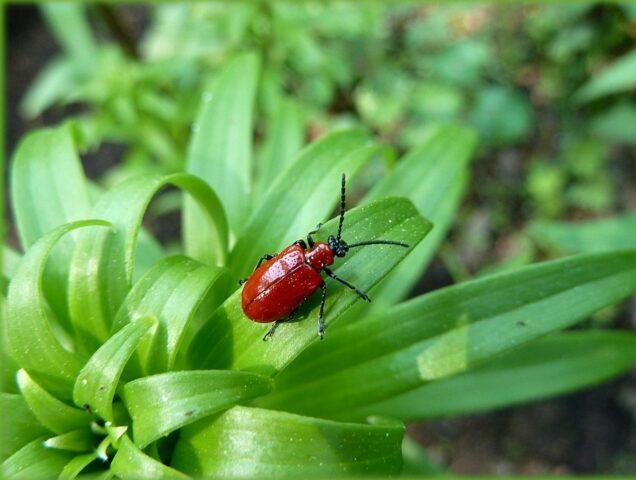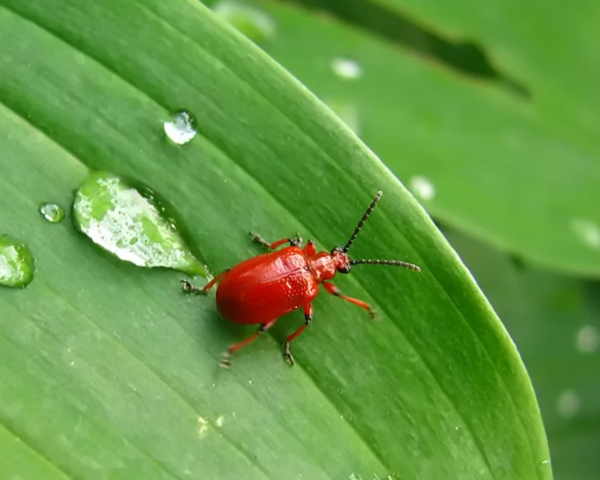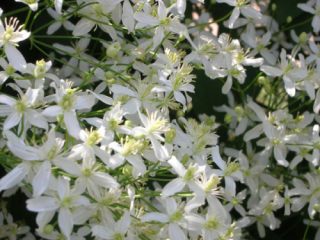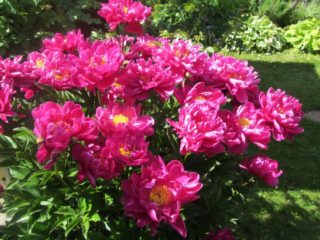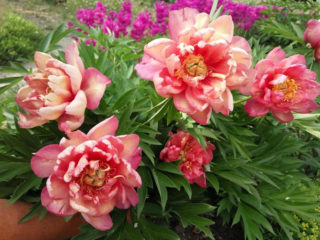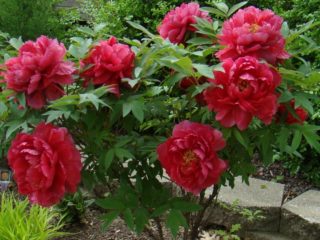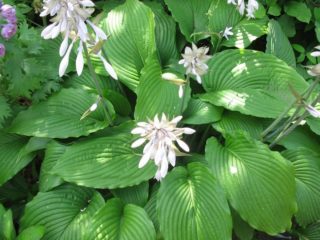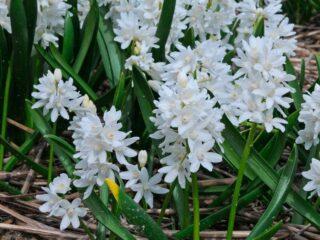Content
The imperial hazel grouse looks very bright and presentable in a flowerbed: when planting it, gardeners count on decorating their garden plot in the spring. However, it also happens that plants “refuse” to form buds, and their decorative effect noticeably suffers. Here it is important to understand exactly why the hazel grouse does not bloom - only then can you take the necessary measures to “neutralize” the negative impact.
When and how long does the imperial hazel grouse bloom?
The flowering period of the imperial hazel grouse extends to 15-25 days. Its start time falls on the last ten days of May or the first days of June.
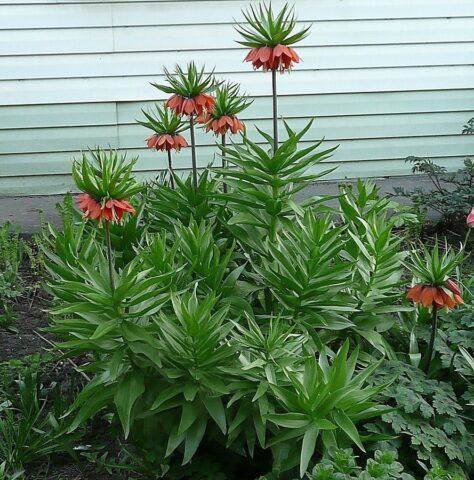
The decorative appearance of the plant does not suffer from the vagaries of the weather - the opened buds are not afraid of low temperatures, precipitation, snowfalls
Why did the imperial hazel grouse not bloom?
If the hazel grouse (fritillaria) does not bloom, the gardener in most cases has himself to blame. The plant is deservedly considered unpretentious, but its survival when planted in the wrong place or serious errors in care does not mean that in such cases it will form buds.
Poor quality planting material
The diameter of the bulbs that are optimally suitable for planting should be at least 8-10 cm. Although there are also those on sale in which it is 4-5 cm.
In this case, after planting, most of the nutrients are spent on “mass building” in small specimens. The process lasts for 1-3 seasons, during which time the hazel grouse does not bloom. He simply does not have enough strength to simultaneously develop the root system and form flower stalks with buds. Although some gardeners are happy with everything: even when the hazel grouse is not blooming, it looks elegant (photos prove this).
You also need to take into account: even good bulbs gradually “age”, turning into low-quality ones; planting material periodically needs to be updated. If this is neglected, the hazel grouse does not bloom at all or blooms very sparingly, the flowers become smaller and deformed, the color of the petals fades.
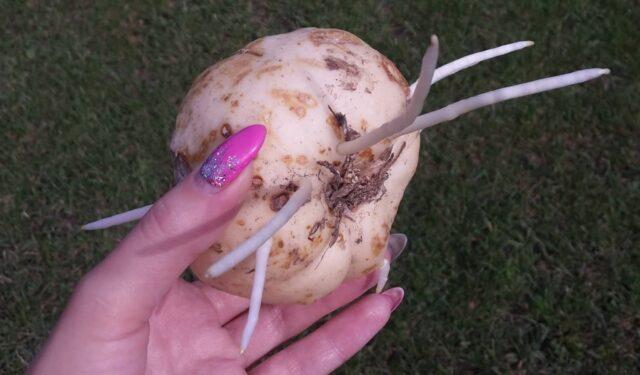
One of the reasons why the plant received the name “imperial hazel grouse” is its large size, which also applies to the bulbs
Pests and diseases
Pest attacks for hazel grouse are extremely rare. On the contrary, it is even used to protect other plants in the flowerbed from insects and rodents. The bulbs and aerial parts have a specific odor that is unpleasant to them. And general endurance includes high resistance to pathogens.
However, it cannot be ruled out that the hazel grouse does not bloom due to insect attack or the development of a disease.
It is attacked by specific pests characteristic of this family.If nothing is done, insects cause large “losses” of green mass. Among the pests:
- Lily beetle. A fairly small red-orange insect with a black head and legs that feeds on leaves.
Simultaneously with the adult individuals of the lily beetle, its larvae - small bright red “sticks” - appear on the underside of the leaves of the hazel grouse.
- Onion cracker. An insect very similar to the lily beetle, but entirely red. Also belongs to the category of leaf beetles.
The onion rattle gets its name from the high-pitched sound it makes when sensing danger.
If the hazel grouse does not bloom, its development clearly slows down, the above-ground part loses its tone, this may be a consequence of the development of root rot. In this case, the gardener most likely waters the flowerbed too often and/or abundantly. In specimens affected by rot, the bulbs turn black or brown, become slimy to the touch, and emit an unpleasant odor.
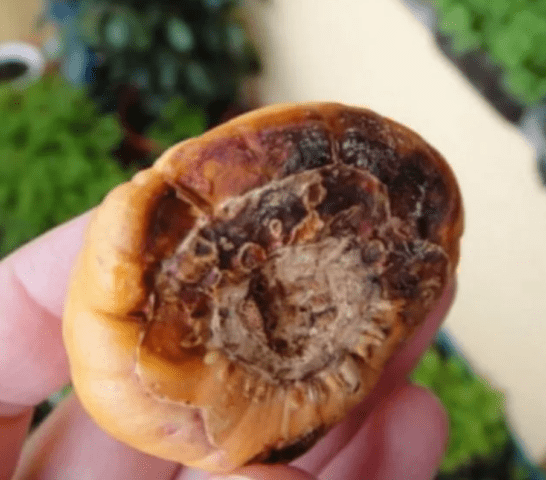
You can accurately verify the presence of rot only by digging up the soil in a flower bed with plants that do not bloom.
Improper care
The hazel grouse can easily “forgive” the gardener for minor “flaws” in agricultural technology, but gross and regular mistakes in care often lead to the fact that the plant does not bloom:
- Watering. The plant does not like either waterlogging or drying out of the soil. If a gardener regularly turns a flowerbed into a “swamp” or “desert,” the hazel grouse will not bloom.
- Fertilizer application. Both nutrient deficiency and excess are harmful. In “poor” soil, hazel grouse does not bloom simply because it lacks strength; when the soil is oversaturated with nitrogen, all of it goes into the formation of green mass to the detriment of the buds.
- Loosening. It is necessary for air exchange, but the hazel grouse has many surface roots.If they are damaged during loosening, the plant loses its ability to “pull” nutrients from the soil and does not bloom.
- Digging up bulbs. Unlike many “relatives”, the imperial hazel grouse’s planting material must be removed from the soil not once every 2-3 seasons, but annually.
- Incorrect storage conditions for bulbs.
- “Warming” the flower bed for the winter. When the roots are severely damaged by frost, the plant does not bloom, directing its efforts to restore them.

Due to the large size and abundance of flowering, complex purchased fertilizers will be preferable for the plant.
Incorrect landing
Sometimes hazel grouse does not bloom if the place for the flower bed is chosen incorrectly. He requires:
- open space or light partial shade;
- protection from strong winds;
- a substrate that combines sufficiently high fertility and friability;
- lack of prerequisites for regular stagnation of water in the soil;
- neutral or close to this soil pH.
You also need to take into account important nuances of the landing procedure:
- presence of drainage;
- deepening specimens of optimal size by 30-35 cm;
- placing the bulb sideways rather than vertically.
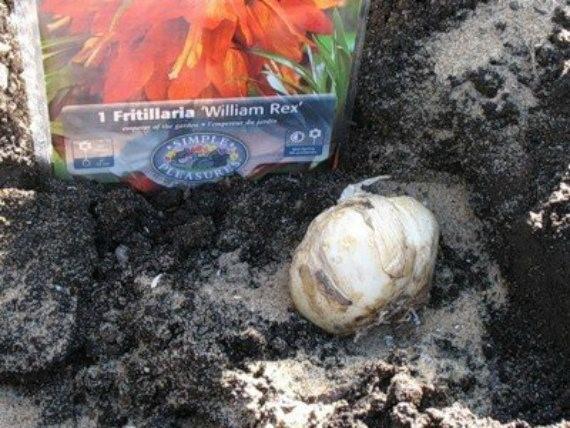
When the bulb lies on its side, there is less chance that the bud from which the peduncle is formed will suffer from rot.
What to do if the hazel grouse does not bloom
If the hazel grouse does not bloom, it is necessary to correctly determine the reason (or a combination of them). The measures taken depend on this:
- When a plant does not bloom due to the wrong choice of location for the flowerbed, it must be replanted, taking into account all its “requirements” and the nuances of the procedure.This will not cause much inconvenience to the gardener; the bulbs still need to be dug up every season.
- If the hazel grouse does not bloom due to watering problems, it needs to be adjusted. Intervals are determined taking into account the frequency, abundance of precipitation, air temperature, allowing the substrate to dry 4-5 cm deep.
- The hazel grouse does not need excessive doses of fertilizers; three feedings per season are enough for it. The first (nitrogen) is carried out 1.5-2 weeks after the start of active growing season, the next (complex) - at the stage of formation of peduncles and 15-20 days after flowering.
- When the hazel grouse does not bloom due to insect attacks, the most affected parts of the plant are cut off, then they are treated with any insecticide against leaf-eating pests.
- If the lack of flowering is due to failure to provide a dormant period, you need to take into account that the bulbs are dug up as soon as the stem dries. Then they are inspected, processed, and after drying in a warm place they are put away for storage. The hazel grouse are planted back at the end of August or at the beginning of September.

There are not so many agricultural technology features of the imperial hazel grouse: if you ask about them in advance, you won’t have to think about why it doesn’t bloom
Conclusion
Sometimes the imperial hazel grouse does not bloom in private plots, despite its unpretentiousness. Indeed, the plant survives, even if the place for the flower bed is chosen incorrectly and the gardener makes gross mistakes in agricultural technology, but flower stalks do not form under such conditions.For regular and long-lasting flowering, it is necessary to study in advance the nuances regarding planting and care in order to provide the crop with maximum “comfort”.
